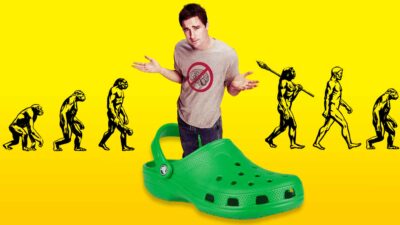In 2012, Hjörtur Smárason was preparing for a move and cleaning out his garage. Buried among the boxes, tools, and mice chewed-roller blades in his garage, was a McDonald’s bag.
Three years prior, McDonald’s announced that they were permanently closing its three locations in Iceland. Sensing the cultural significance of this fast food farewell, Smárason bought a final Big Mac meal with fries on October 31, 2009. He took his Iceland McDonald’s burger home, stashed the bag away, and promptly forgot about it. The bag and its content had sat undisturbed in his garage for 3 years up until this moment.
He was curious. What was inside after all of this time? Reluctantly, Smárason opened the McDonald’s bag expecting to find a science experiment of moldy food and decayed nastiness. But shockingly, both the hamburger and fries looked freshly made. Not even the mice had touched it. Apparently, his roller blades were more tasty than his Big Mac.
At that point, it dawned on Smárason that this was no ordinary fast food relic. Not only was it the “Last McDonald’s burger in Iceland”, but it appeared to be self-preserving. Understanding its scientific and cultural significance, Smárason knew this burger deserved to be in a museum.
How A Mummified Iceland McDonald’s Burger Became A Famous ‘Historical Artifact’ Share on XThe “Last McDonald’s Burger In Iceland” Gains International Fame
After making some arrangements, Smárason brought his ancient McDonald’s meal to the National Museum of Iceland. There it sat on display for a year where some museum guests even ate a few fries (gross!). But eventually the museum decided to end the display and asked Smárason if they should throw it out.
Deciding that “Last McDonald’s burger in Iceland” still had historic value, he transferred it to the Bus Hostel in Reykjavik. Although the Bus Hostel lacked the foot traffic of the National Museum of Iceland, the staff used the Internet to take the burger to fans around the world.

The staff at the Bus Hostel created a livestream and even started taking the burger on road trips around the country. Instagram photos of these journeys received thousands of likes and grew the legend behind this ancient fast food order. Someone even created a documentary about it!
After an extended stay at the Bus Hostel, the “Last McDonald’s burger in Iceland” is now on display at the Snotra House hostel in south Iceland.
What Does Corporate Think About This Old Iceland McDonald’s Burger?
McDonald’s corporate obviously isn’t thrilled by this burger and its International fame. They claim that instances where their food hasn’t decomposed is because of lack of moisture, not because of their powerful preservatives. In 2020, McDonal’d even released an official statement on the matter titled, “Response to myth that McDonald’s burgers do not decompose“.
Response to myth that McDonald’s burgers do not decompose
August 31, 2020
In the right environment, our burgers, like most other foods, could decompose.
But, in order to decompose, you need certain conditions – specifically moisture. Without sufficient moisture – either in the food itself or the environment – bacteria and mold may not grow and therefore, decomposition is unlikely. So if food is or becomes dry enough, it is unlikely to grow mold or bacteria or decompose. Food prepared at home that is left to dehydrate could see similar results. Look closely, the burgers you are seeing are likely dried out and dehydrated, and by no means “the same as the day they were purchased.”
The reality is that our burgers are made only with 100% USDA inspected beef. There are no preservatives or fillers in our patties and the only thing ever added is a touch of salt and pepper on the grill.
Lack of moisture? I don’t know about that. I’ve been to Iceland. In Iceland it rains and snows there a lot. It’s pretty moist country. Plus, if you search YouTube, other people have had similar experiences where their McDonald’s meals haven’t decomposed.
The Enduring Historical Relic Of Iceland’s Last Big Mac
Today the infamous Iceland McDonald’s burger is now as old as a teenager and sits peacefully in its display case at the Snotra House. Against all odds, this very old McDonald’s food remains visually unchanged, its original form miraculously maintained.

Not eating a hamburger isn’t the most remarkable thing Smárason’s ever done during his life. But if you do an image search for his name, you will see a lot of pictures of an old hamburger making international headlines. Like it or not, it’s now part of his personal legacy.
Over the years, the story of Iceland’s last BigMac has grow into something more than just a weird fast food meal that refuses to decompose. Its natural mummification has allowed this burger to play the unique role of commemorating McDonald’s legacy. Like an insect trapped in amber, it immortalizes a moment in time when an iconic American brand suddenly vanished from Iceland.
It also represents Iceland’s reorientation toward local cuisine and a boutique cultural identity. The void left by McDonald’s departure opened opportunities for local burger chains like Metro. Not having a McDonald’s in Iceland actually makes the nation feel more authentic.
How long will the last Iceland McDonald’s Big Mac last? Will it ever decompose? Share your guess in the comments.























 100 Funny Rejected Children’s Books
100 Funny Rejected Children’s Books
Leave a Reply